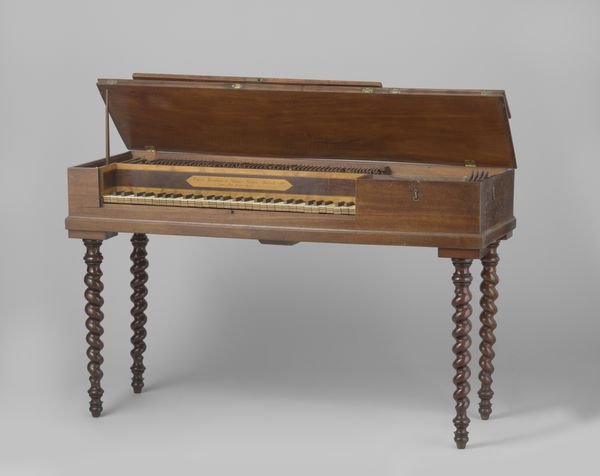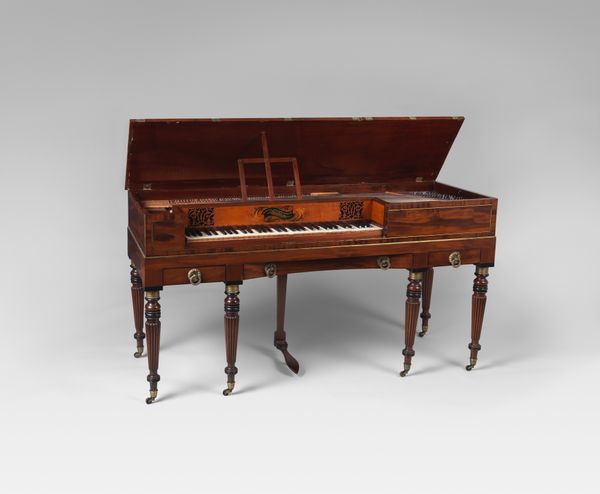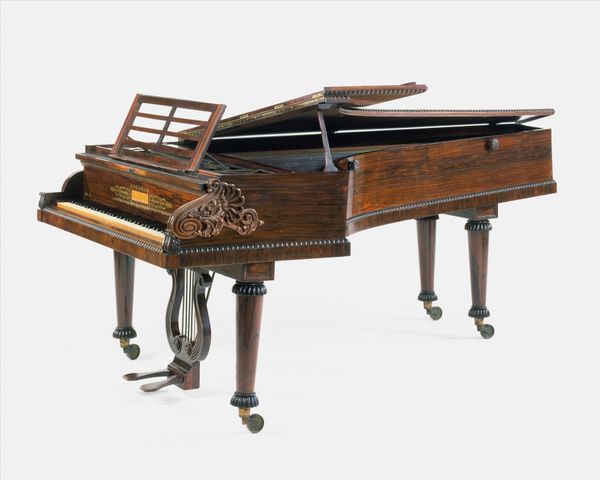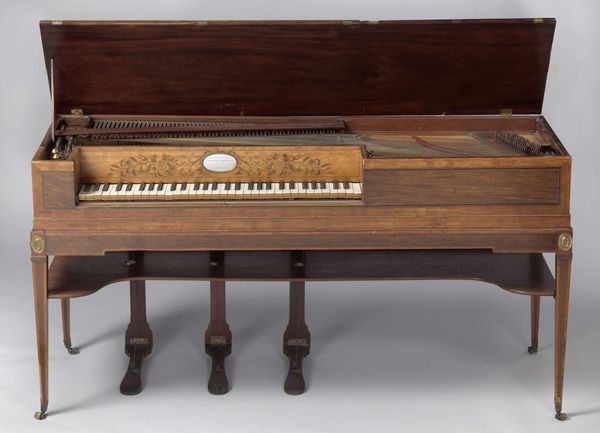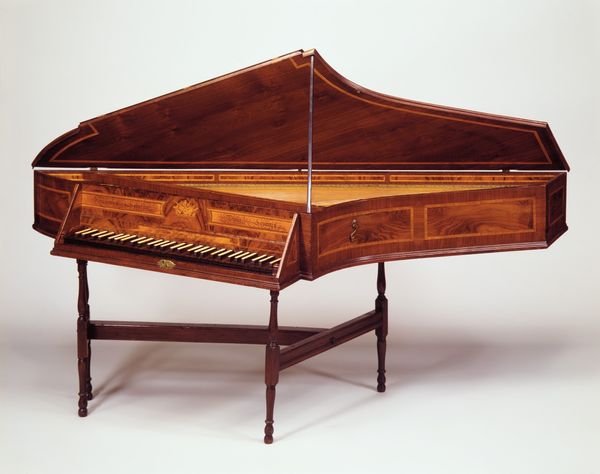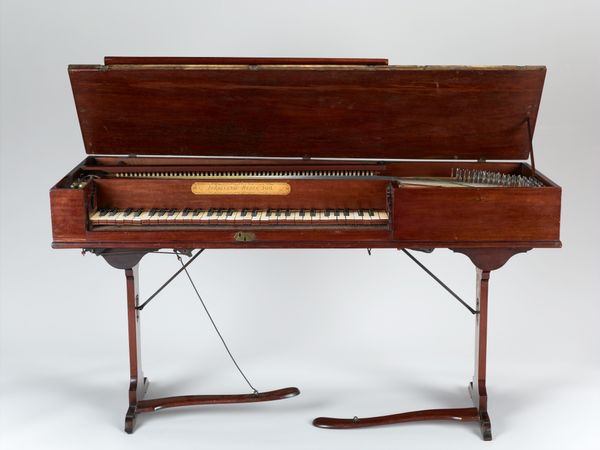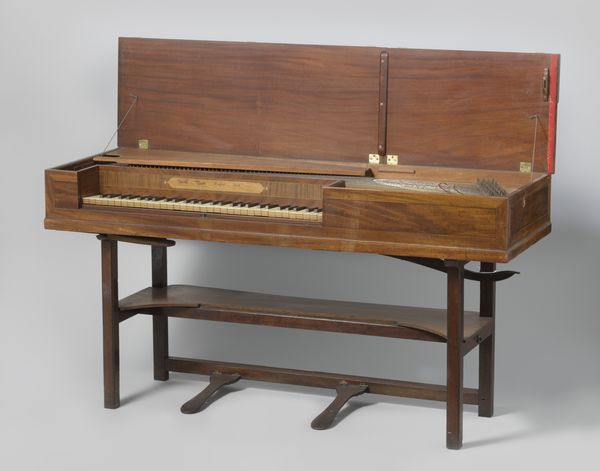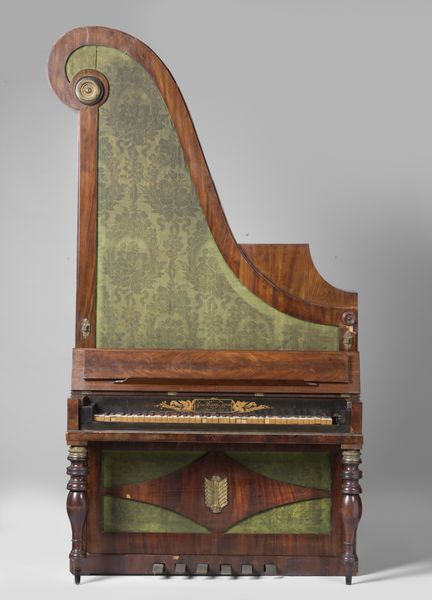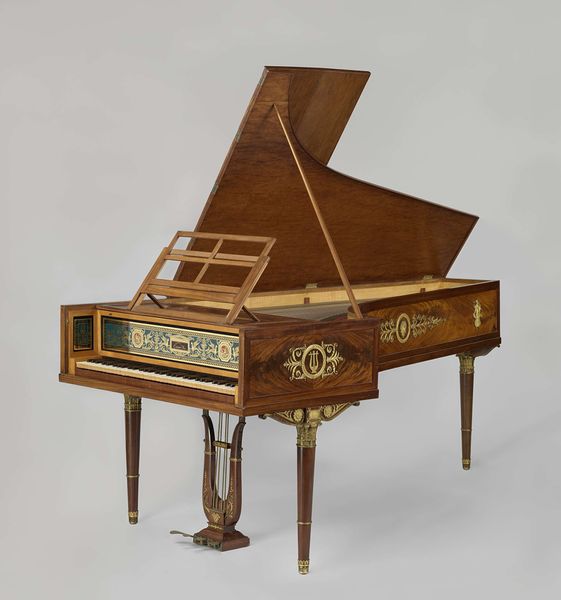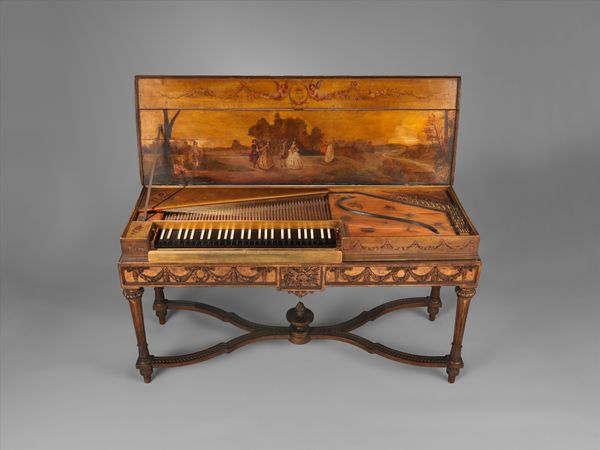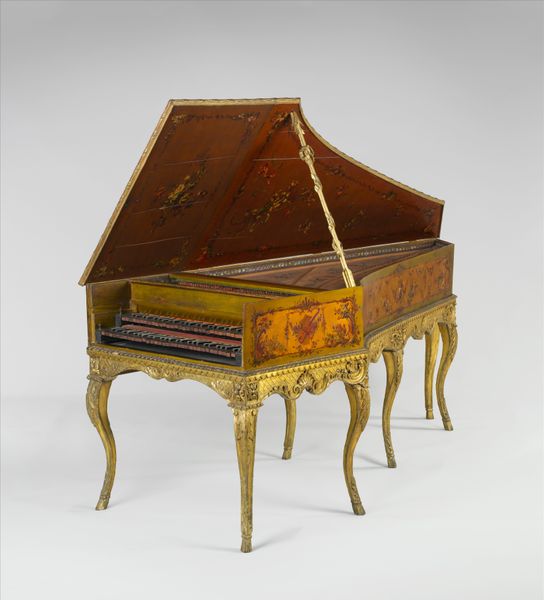
carving, wood
#
carving
#
wood
#
decorative-art
Dimensions: 32 3/4 x 79 3/8 x 30 1/2 in. (83.2 x 201.6 x 77.5 cm)
Copyright: Public Domain
Editor: Here we have a Bentside spinet made in 1769. The decorative carving in the wood gives it a regal yet domestic feel, but who was really meant to have access to these instruments, and why were they constructed this way? What’s your take? Curator: When we look at something like this, we must remember the world in which it was created. This spinet isn’t just an object, it's a materialization of 18th-century social structures. Who had the leisure time to play? The economic power to acquire such an ornate item? Consider the role of women in the upper classes at this time; how might accomplishments like playing the spinet contribute to or confine their identities? Editor: That's a good point. It does seem like its delicate form clashes with how power really functioned then. So, the spinet isn't simply about music, but a symbol of status and gender roles. Curator: Exactly. These objects often served as indicators of refinement, reinforcing social hierarchies. And what about the material itself? The wood, the carving… How were those resources acquired, and who did the labour? By acknowledging these intersecting histories of gender, class, and labor, we start to unpack not just what it is, but what it represents. Editor: I never would have considered all that by just looking at it. Thanks for helping me think of objects as cultural artifacts! Curator: That's what makes art history exciting! It's about reading objects to understand the power dynamics they embody.
Comments
No comments
Be the first to comment and join the conversation on the ultimate creative platform.

